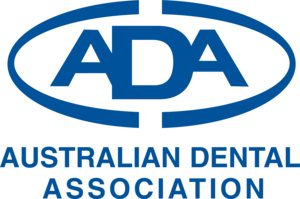Crown and Bridge
What is a crown?
A crown is a “cap” that is placed over the prepared existing tooth which fully encases the tooth to restore the shape, size, and strength, and to improve its appearance. An artificial crown is often the best way to save a tooth and strengthen it.
What is a Bridge?
A bridge replaces one or more missing teeth. It consists of one or more crowns anchored to the adjacent natural teeth (either side of the missing tooth) with a pontic in the middle.
What is involved in preparing for a crown or bridge?
You will require at least two appointments for preparation and fitting of a crown or bridge.
VISIT ONE - PREPARATION OF THE TOOTH/TEETH
The tooth/teeth is shaped into the desired shape with the necessary margins for the crown/bridge. An impression is taken of the preparation and surrounding teeth. This impression is sent to to provide a dental technician who fabricates the crown/bridge according to specifications provided.
A temporary crown or bridge will be placed to protect the prepared tooth/teeth during the fabrication timeframe. It recommended that you refrain from eating on the temporary crown/bridge as not as strong as the final crown or bridge and at risk of dislodgment.
VISIT TWO - FITTING OF THE CORWN? BRIDGE
Firstly the temporary crown or bridge is removed. The new crown is placed over the reshaped tooth/teeth or bridge to check that the shade and shape is correct. If the crown is satisfactory in its fit and all other parameters, it is permanently cemented to the tooth with dental cement. This usually sets in less than one hour and reaches full strength in 24 hours so again it is recommended to avoid eating on it, especially any sticky or hard foods.
The dentist may need to do adjustments to the crown before fitting it to ensure it is comfortable to bite on. This is where your help comes in! The dentist will partly rely on you in testing your occlusion by asking you to tap your teeth together onto some special marking paper. After you tap you will let the dentist know how it feels. If it feels too high, uncomfortable or strange in any way, then the dentist will do any necessary adjustments until both are satisfied.
How Do I Look After A CROWN OR BRIDGE?
Just like your natural teeth, crowns and bridges require regular flossing and brushing, with extra attention around the margins where decay is more likely.
Maintaining optimal oral hygiene including regular checkup and cleans reduces the likelihood of further teeth and gum issues. This is essential in reducing the need for more extensive treatments. Learn more about
Temporary Crown care.
FAQs
Why Should Missing Teeth Be Replaced?
Replacing missing teeth is essential for maintaining both oral health and overall well-being. When a tooth is lost, the surrounding teeth can shift into the empty space, leading to misalignment, bite issues, and potential difficulty in chewing or speaking. Additionally, missing teeth can cause the jawbone to weaken over time due to lack of stimulation, leading to bone loss and changes in facial structure.
Replacing missing teeth not only restores functionality but also helps preserve the integrity of your smile. Options like dental implants, bridges, or dentures ensure you can eat comfortably, speak clearly, and maintain a confident, healthy appearance.
Are There Any Possible Complications Of Crown Or Bridge Treatment?
While crown and bridge treatments are generally safe and highly effective, there are some potential complications to be aware of:
- Tooth Sensitivity: After the procedure, you may experience temporary sensitivity to hot or cold temperatures. This usually subsides as the tooth adjusts to the restoration.
- Discomfort or Misalignment: If the crown or bridge feels uneven or causes discomfort, adjustments may be necessary to ensure a proper fit.
- Damage to the Restoration: Crowns or bridges can crack, chip, or become loose over time, especially with habits like teeth grinding or chewing hard foods.
- Decay or Gum Issues: Poor oral hygiene can lead to decay under the crown or bridge or cause gum disease around the restoration. Maintaining regular dental check-ups and good oral hygiene is essential.
- Allergic Reaction: Though rare, some patients may have an allergic reaction to the materials used in the crown or bridge.
Discuss any concerns with your dentist to ensure a smooth procedure and long-lasting results. With proper care, crowns and bridges can provide years of reliable function and a natural-looking smile.





